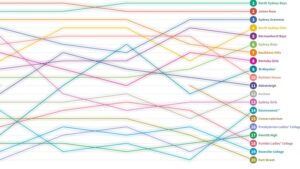
Using a corkscrew, writing a letter with a pen, or unlocking a door by turning a key are actions that seem simple but require a complex orchestration of precise movements. So, how does the brain do it? According to a new study by researchers from Carnegie Mellon University and the University of Coimbra, the human brain has a specialized system that builds these actions in a surprisingly systematic way.
The study reveals that the full repertoire of human hand actions can be constructed from a small number of basic building block movements, similar to how words in a language are formed by recombining letters. Researchers used computational modeling of functional MRI data to demonstrate that a brain region called the supramarginal gyrus (SMG) — located in the left inferior parietal lobe and known for its role in planning object-directed actions — builds representations of complex actions by recombining a limited set of coordinated movement patterns of the fingers, hands, wrists, and arms. These movement patterns are termed “kinematic synergies.”
Understanding Kinematic Synergies
For instance, the posture of the hand while using a pair of scissors is similar to that when using a pair of pliers, even though scissors and pliers have very different functions. Conversely, even though a pair of scissors and an X-ACTO knife might be used for the same purpose, the hand postures for these tools differ significantly. The researchers found that activity in the SMG portion of the brain had similar representations for objects that shared similar hand postures.
“Just as brain regions supporting language function combine sounds, or phonemes, to form words, the brain also combines kinematic synergies to form complex, object-directed actions,” said Leyla Caglar, lead author of the study, which will be published in Proceedings of the National Academy of Sciences on August 18, 2025.
Caglar, currently a postdoctoral fellow at Mount Sinai Medical Center, led this research while she was at Carnegie Mellon University and the University of Coimbra, Portugal. The study was funded by grants from the National Institute of Health, the Pennsylvania Department of Health, and The European Research Council.
Implications for Robotics and Brain-Machine Interfaces
While the concept that the brain uses a combinatorial structure of motor synergies is not new, this study’s findings have profound implications for robotics and the development of effective brain-computer interfaces. According to study author Dr. Jorge Almeida, mapping these synergies directly from neural activity could lead to more efficient brain-machine interfaces, allowing users to control prosthetics with greater naturalness, precision, and flexibility.
“This also moves us closer to creating artificial systems capable of acting with agility, efficiency, and intelligence comparable to that of humans,” said Almeida.
The discovery may also offer new perspectives on disorders such as apraxia, a neurological condition where patients lose the ability to use objects correctly despite recognizing them. Damage to the brain area responsible for assembling action elements can impair the ability to plan and execute complex actions with objects.
Integration of Cognition, Perception, and Action
When we use our hands to grasp objects, we don’t consciously build actions from elemental parts, much like native speakers of a language don’t consciously construct words. The processes supported by the supramarginal gyrus run automatically in the background, integrating various types of information — visual, tactile, motor, and conceptual — about the world and the body’s status.
The brain’s structure reflects the integration of individual experiences with evolutionarily constrained structures. While humans are not born knowing how to manipulate tools, this knowledge is learned and constitutes cultural knowledge. Despite differences in manual dexterity and interactions with objects, all humans share a common neural system that supports complex object-directed interactions.
“This study moves us one step closer to understanding the fundamental principles of brain organization that make human tool use possible,” said Caglar.
As researchers continue to explore the brain’s intricate systems, these findings may pave the way for advancements in technology and medicine, enhancing our understanding of how we interact with the world and potentially transforming the lives of those with motor impairments.







